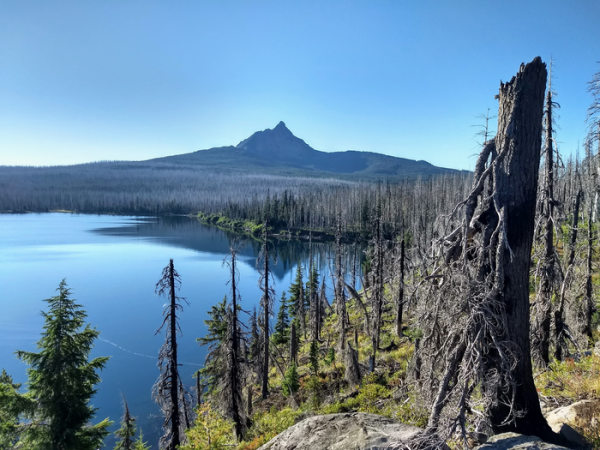Thanks to climate change, high-elevation forests in the Central Cascade mountains of the Pacific Northwest are burning more frequently and expansively than in the recent past, prompting researchers and fire managers to question whether forests will be able to recover from these emerging fire patterns and whether they will require human assistance to do so.
A new study by Portland State University researchers characterizes the role of fire refugia—the green islands of live trees that remain after forest fires—in forest regeneration following large and severe fires in the High Cascade mountains of Oregon and Washington.
The results of this study can help determine when human intervention in the form of tree replanting is warranted, when it isn't, where replanting efforts should be targeted and what species should be prioritized. This is important to know since replanting can be expensive and overstocked forests with abnormally high tree density and/or with tree species that are available in nurseries can reduce habitat quality or pose a compounded future fire hazard.
Sebastian Busby, former PSU PhD student and current postdoctoral researcher at the U.S. Forest Service, and Andrés Holz, associate professor of geography, conducted the study, which was published in Frontiers in Forests and Global Change.
Read more at Portland State University
Image: Big Lake, Oregon (same lake seen in the remote sensing picture) following 2012 Shadow Lake Fire. Mt. Washington can be seen in the background. (Credit: Sebastian Busby)


